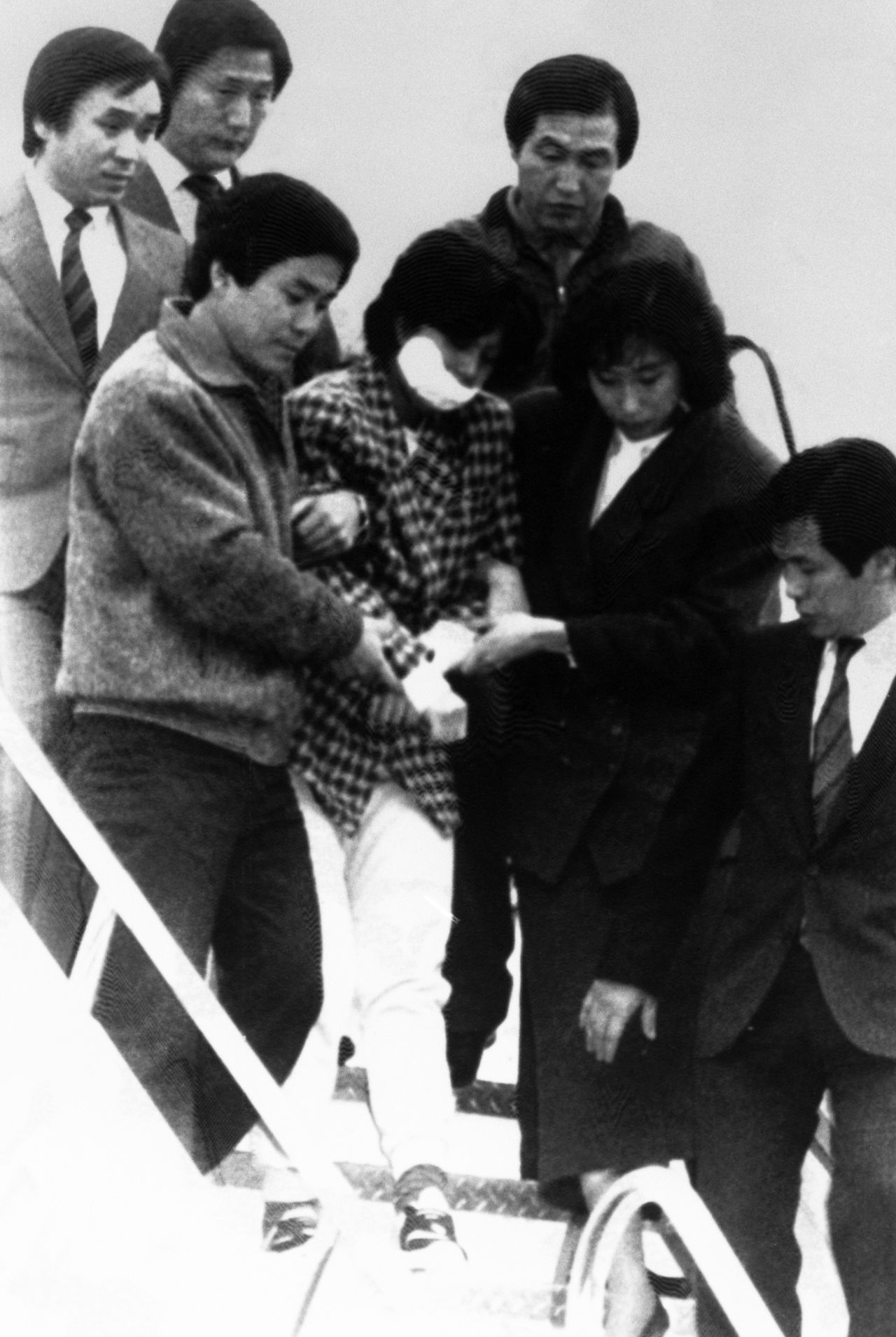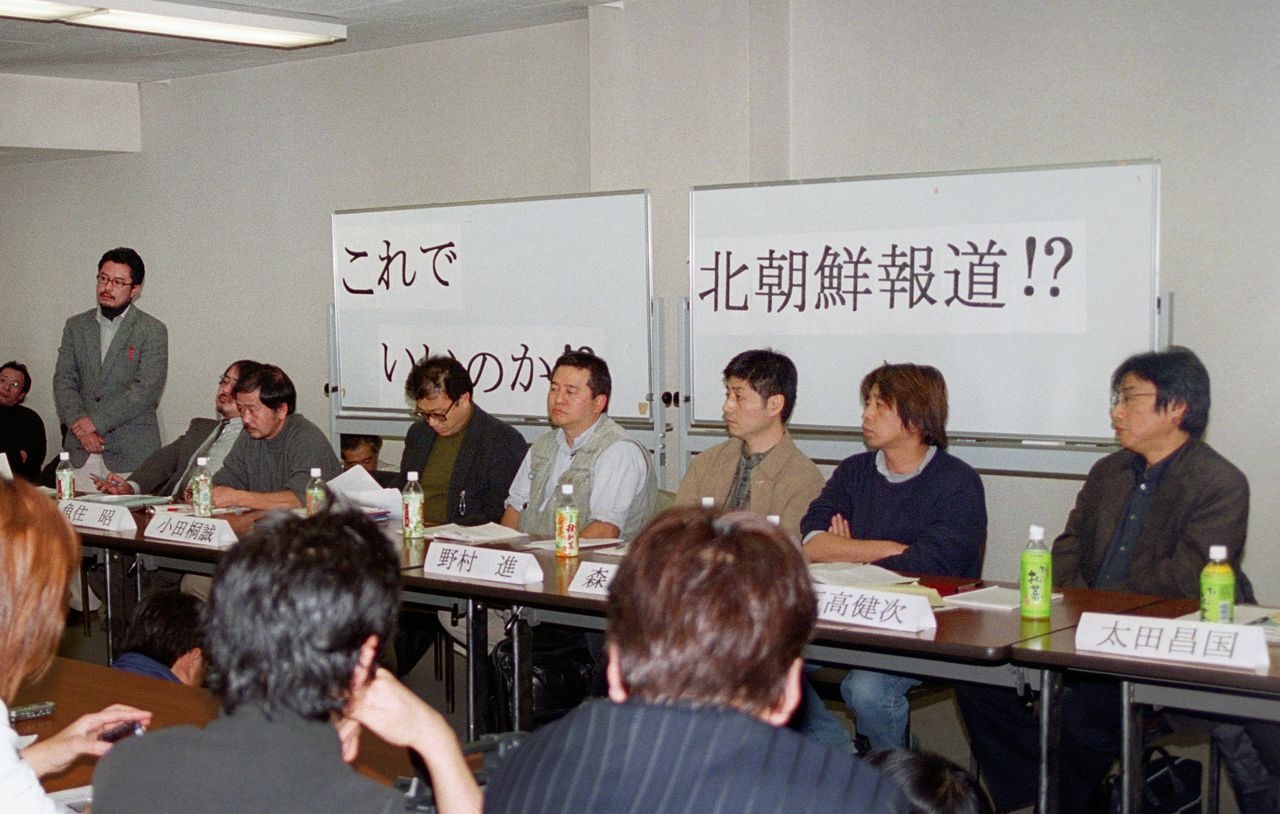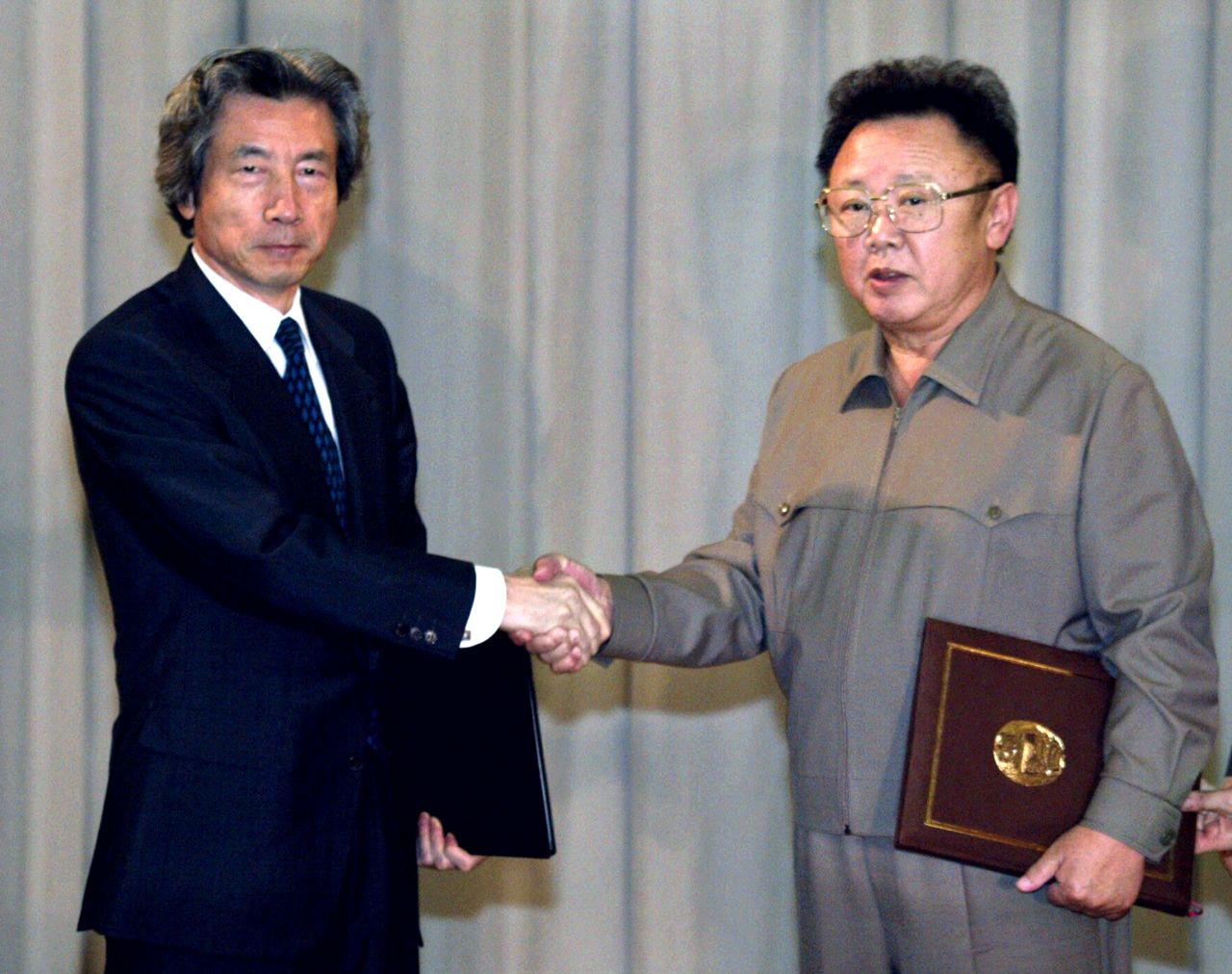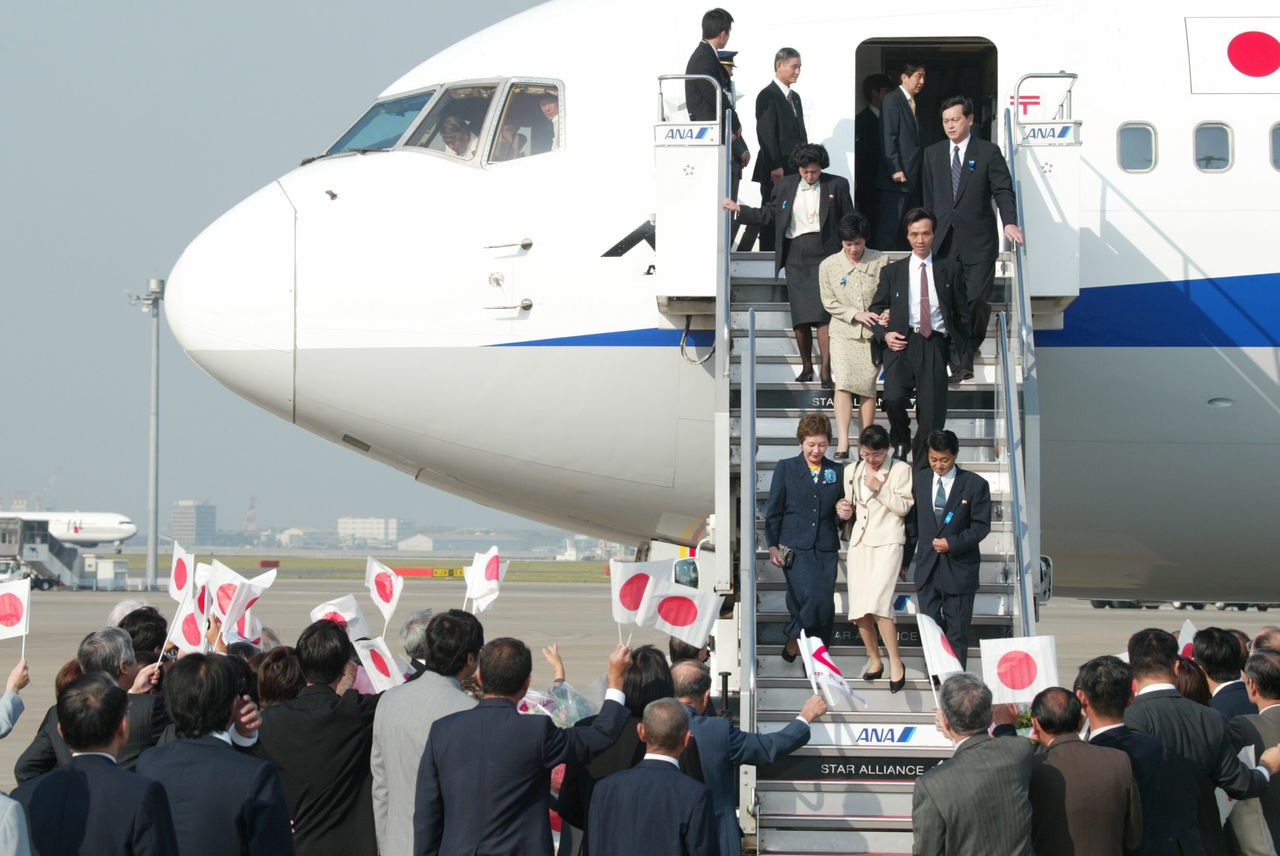
Japan’s Failure to Bring North Korea’s Abductees Home
Politics Society- English
- 日本語
- 简体字
- 繁體字
- Français
- Español
- العربية
- Русский
Suspicious Incidents on the Sea of Japan Coast
Following its rapid post-war economy recovery, Japan in the 1970s was enjoying its prosperity and had achieved the status of a “developed nation.” Exploiting Japan’s peaceful existence, North Korea chose this moment to initiate its reprehensible “special foreign operations.”
Shortly after 5:00 pm on the evening of August 15, 1978, a young man and woman were walking along the beach near Takaoka, Toyama Prefecture. Suddenly attacked by four strangers, both were thrown into cloth bags after being bound and gagged. Anticipating the arrival of a getaway boat, the perpetrators waited on the coast of the Sea of Japan with the two cloth bags by their side. However, the sudden barking of a dog panicked the perpetrators, and they fled the scene.
This incident ended with the man and woman keeping their freedom, luckily; but several suspicious and sudden disappearances along the Sea of Japan coastline were taking place around this time. Many of these people were likely the victims of North Korean kidnapping attempts similar to the Takaoka case.
At the time, this incident was treated by the police as an aberration—a crime by unknown perpetrators with an unknown motive. Newspapers and television news gave it only minor coverage. This is because at that time in Japan, few people considered the possibility of North Korean involvement in this abduction attempt and other disappearances. These abductions were carried out using a variety of methods. Some North Korean agents targeted people they knew. A manager of a Chinese ramen restaurant was involved in the abduction of one of his employees, Tanaka Minoru, in 1978.
Several of the abduction cases also shockingly involved the cooperation of other Japanese nationals. Arimoto Keiko was studying in London when she was lured to Denmark by Yao Megumi and subsequently whisked away to North Korea. Yao was the former wife of Shibata Yasuhiro, leader of the 1970 “Yodo-gō” incident, where nine members of the Japanese Red Army hijacked Japan Airlines Flight 351, commonly called the Yodo-gō. Given asylum in North Korea, members of this “Yodogō Group” and their wives (whom they married after the hijacking incident) then began cooperating with North Korean authorities in the abductions of Japanese nationals. In addition to the Arimoto case, the abductions of Matsuki Kaoru and Ishioka Tōru also took place in Europe with the involvement of the wives of Yodo-gō perpetrators.
Following the Korean War armistice in 1953, North Korea stepped up its espionage activities in South Korea. As South Korean counterespionage measures intensified, Pyongyang looked to arm its foreign agents with Japanese language abilities to allow them to enter Japan undetected by posing as Japanese nationals. This was the motivation for the abductions.
Currently, the Japanese government officially recognizes 12 abductions and 17 victims. This is likely only the tip of the iceberg, however. The National Association for the Rescue of Japanese Kidnapped by North Korea has independently identified seven more people as likely abductees. Another civil society organization, the Investigation Commission on Missing Japanese Probably Related to North Korea, estimates that approximately 470 people may have been abducted. The Japanese government also claims that, as of November 2021, abduction cannot be ruled out in the cases of 873 individuals. Released in 2014, the final report of the United Nations Commission of Inquiry on Human Rights in North Korea also declared that “it is probable that at least 100 Japanese nationals have been abducted” by North Korea.
Kim Hyon-hui’s Shocking Testimony
It was only in 1987 that suspicions of North Korea’s systematic involvement in the abduction of Japanese nationals were confirmed. That year, a bomb planted on Korean Air Flight 858 exploded over the Indian Ocean, killing all 115 people on board. A North Korean agent, Kim Hyon-hui, was soon arrested and extradited to South Korea for her involvement in the bombing.

Suspect Kim Hyon-hui taken to Gimpo Airport, Seoul. (© Jiji)
At the time of her arrest, Kim pretended to be Japanese, spoke Japanese fluently, and was in possession of a forged Japanese passport. She told interrogators that she had studied Japanese in North Korea under a Japanese woman named Lee Un-hae. While Kim did not know her real name, Lee had written the word “Chitose” in a notebook. This pointed to Taguchi Yaeko, who had disappeared in 1978 at the age of 22 after leaving her two children at a Shinjuku, Tokyo, daycare facility.
This is because “Chitose” was the name Taguchi used at Hollywood, the Tokyo hostess club where she worked immediately before her disappearance. When presented with 15 photographs of women by Japanese investigators, Kim chose Taguchi’s image without hesitation.
The subsequent announcement by Japanese police at a May 1991 press conference that Lee Un-hae was, in fact, Taguchi, caused a media frenzy and sent shockwaves through Japanese society. However, even after the disturbing revelations, the Japanese government was slow to act until the late 1990s.
Ishidaka Kenji, a journalist in the Asahi Television news bureau, was at the forefront of reporting on the abduction issue.

A press conference and discussion on “How to Report on North Korea” in the House of Councillors building, Nagatachō, Tokyo, in October 2002. Asahi Television’s Ishidaka Kenji is seated second from right. (© Jiji)
According to Ishidaka, “it was in January 1997 when I found out that Yokota Megumi, who had gone missing 20 years earlier while in the first year of junior high school, had in fact been abducted by North Korea. At that time, few Japanese were interested in the abduction issue. After the February 1997 report, however, even the Japanese government became interested.”
Megumi’s parents, Shigeru (now deceased) and Sakie, played an important role in spearheading advocacy for the abductees. Shigeru headed up the Association of the Families of Victims Kidnapped by North Korea, established in March 1997. In August of the same year, he submitted 500,000 signatures collected by the organization to the Prime Minister’s Office. From this point on, media coverage of the abduction issue would not let up.
Kim Jong Il’s Summit Apology
The Japanese public’s interest in the issue heightened, but North Korea continued to deny its involvement. The situation changed drastically, however, after the inauguration of Koizumi Jun’ichirō as prime minister in 2001.
Behind-the-scenes negotiations led by Tanaka Hitoshi, director general of the Ministry of Foreign Affairs’ Asian and Oceanian Affairs Bureau, resulted in Prime Minister Koizumi visiting Pyongyang on September 17, 2002. It was the first ever visit to North Korea by a Japanese prime minister.

Prime Minister Koizumi Jun’ichirō became the first Japanese prime minister to visit North Korea in September 2002. (© Reuters)
At the history-making summit meeting, North Korean leader Kim Jong-il provided the first official acknowledgement of the abductions. Apologizing for North Korea’s actions, Kim explained that the abductions were “initiated by special-mission organizations . . . driven by blindly motivated patriotism and misguided heroism.”
On October 15, 2002, five abductees returned to Japan for the first time in 24 years: Hasuike Kaoru and his wife Yukiko (from Kashiwazaki, Niigata Prefecture), Soga Hitomi (Sado, Niigata Prefecture), and Chimura Yasushi and his wife Fukie (Obama, Fukui Prefecture). In 2004, Prime Minister Koizumi visited North Korea for a second time, securing the release of five children who were born in North Korea: the Chimura couple’s three children and the Hasuike couple’s two children.

The returning abductees descend the ramp of a government chartered plane, touching Japanese soil for the first time in 24 years at Haneda Airport, Tokyo, on October 15, 2002. (© Jiji)
However, the issue was far from being fully resolved. North Korea claimed that 8 of the 12 remaining victims recognized by the Japanese government, including Yokota Megumi, were already dead. It denied involvement in the four other cases. However, North Korea’s explanations and the “evidence” provided for these claims are riddled with inconsistencies. The Japanese government continues to demand further investigations.
Hardening Attitudes Following Acknowledgement of Abductions
Why did North Korea admit to the abductions? The Cold War had come to an end with the collapse of the Soviet Union, which had been North Korea’s main benefactor. North Korea’s food situation was also deteriorating. In return for progress on the abduction issue, North Korea sought humanitarian relief and economic cooperation. At the second Japan–North Korea summit in 2004, the Japanese government promised to provide through international organizations 250,000 tons of food and $10 million worth of medical supplies. This aid, however, was subsequently frozen, and further negotiations on the issue stalled.
Progress has been undermined by a change in North Korea’s international strategy. Having made nuclear weapons acquisition its top national defense priority, Pyongyang conducted an underground nuclear test in October 2006. North Korea has also continued to develop intercontinental ballistic missiles. Calls for prioritizing pressure over dialogue only strengthened in Japan, and even the United Nations General Assembly adopted a resolution condemning North Korea’s human rights abuses. As North Korea became increasingly isolated from the international community, its insistence that the abduction issue has already been resolved only grew stronger.
During his second stint in office (2012–20), Prime Minister Abe made resolution of the abduction issue a main policy priority. Abe’s basic approach for negotiations with North Korea was to use both “dialogue and pressure.” He was clear in saying that there would no normalization of Japan-DPRK diplomatic relations without the resolution of the abduction issue. No significant results were, however, achieved.
A highly anticipated event during the Abe administration was the May 2014 intergovernmental talks between Japan and North Korea in Stockholm. The two countries agreed that, in return for the removal of some of the sanctions imposed by Japan, North Korea would revive investigations into the abductions and other missing Japanese citizens. According to press reports, North Korea even informally revealed that Tanaka Minoru and Kaneda Tatsumitsu, who went missing in the late 1970s, were alive in North Korea. However, subsequent negotiations broke down and no progress has been made since the Stockholm agreement.
Why has the abduction issue not been resolved? Ishidaka explains:
“Even now, there are abductees living in North Korea, but the government has not been able to bring them home. One reason is Japan’s lack of an intelligence agency capable of carrying out the necessary investigations. Japan struggles to procure inside information on North Korea by, for example, embracing pro–North Korean third-country agents. This in turn means it cannot implement an effective negotiation strategy. Japan cannot rescue its own abducted citizens. This is ultimately a grave national security problem for Japan.”
(Originally published in Japanese. Reporting and text by Nishioka Yukifumi and Power News. Banner photo: Families of abductees raise their voices at a “citizen’s rally” calling for the return of abductees to Japan in Chiyoda, Tokyo, on May 27, 2023. © Kyōdō.)